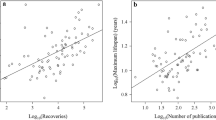Abstract
The relationship of oxidative stress with maximum life span (MLSP) in different vertebrate species is reviewed. In all animal groups the endogenous levels of enzymatic and non-enzymatic antioxidants in tissues negatively correlate with MLSP and the most longevous animals studied in each group, pigeon or man, show the minimum levels of antioxidants. A possible evolutionary reason for this is that longevous animals produce oxygen radicals at a low rate. This has been analysed at the place where more than 90% of oxygen is consumed in the cell, the mitochondria. All available work agrees that, across species, the longer the life span, the lower the rate of mitochondrial oxygen radical production. This is true even in animal groups that do not conform to the rate of living theory of aging, such as birds. Birds have low rates of mitochondrial oxygen radical production, frequently due to a low free radical leak in their respiratory chain. Possibly the low rate of mitochondrial oxygen radical production of longevous species can decrease oxidative damage at targets important for aging (like mitochondrial DNA) that are situated near the places of free radical generation. A low rate of free radical production can contribute to a low aging rate both in animals that conform to the rate of living (metabolic) theory of aging and in animals with exceptional longevities, like birds and primates. Available research indicates there are at least two main characteristics of longevous species: a high rate of DNA repair together with a low rate of free radical production near DNA. Simultaneous consideration of these two characteristics can explain part of the quantitative differences in longevity between animal species.
Similar content being viewed by others
Author information
Authors and Affiliations
Additional information
Accepted: 12 December 1997
Rights and permissions
About this article
Cite this article
Perez-Campo, R., López-Torres, M., Cadenas, S. et al. The rate of free radical production as a determinant of the rate of aging: evidence from the comparative approach. J Comp Physiol B 168, 149–158 (1998). https://doi.org/10.1007/s003600050131
Issue Date:
DOI: https://doi.org/10.1007/s003600050131




